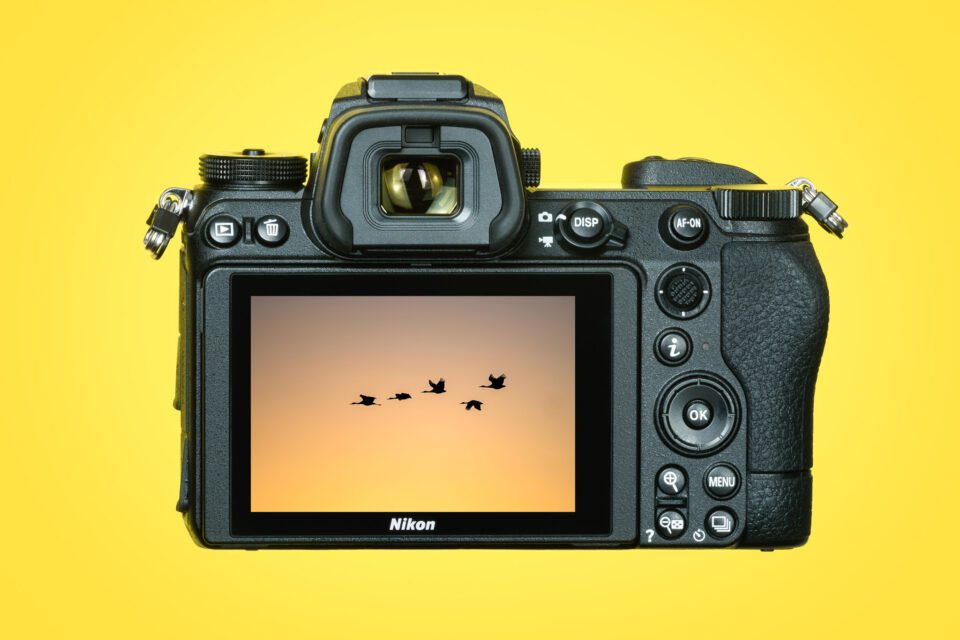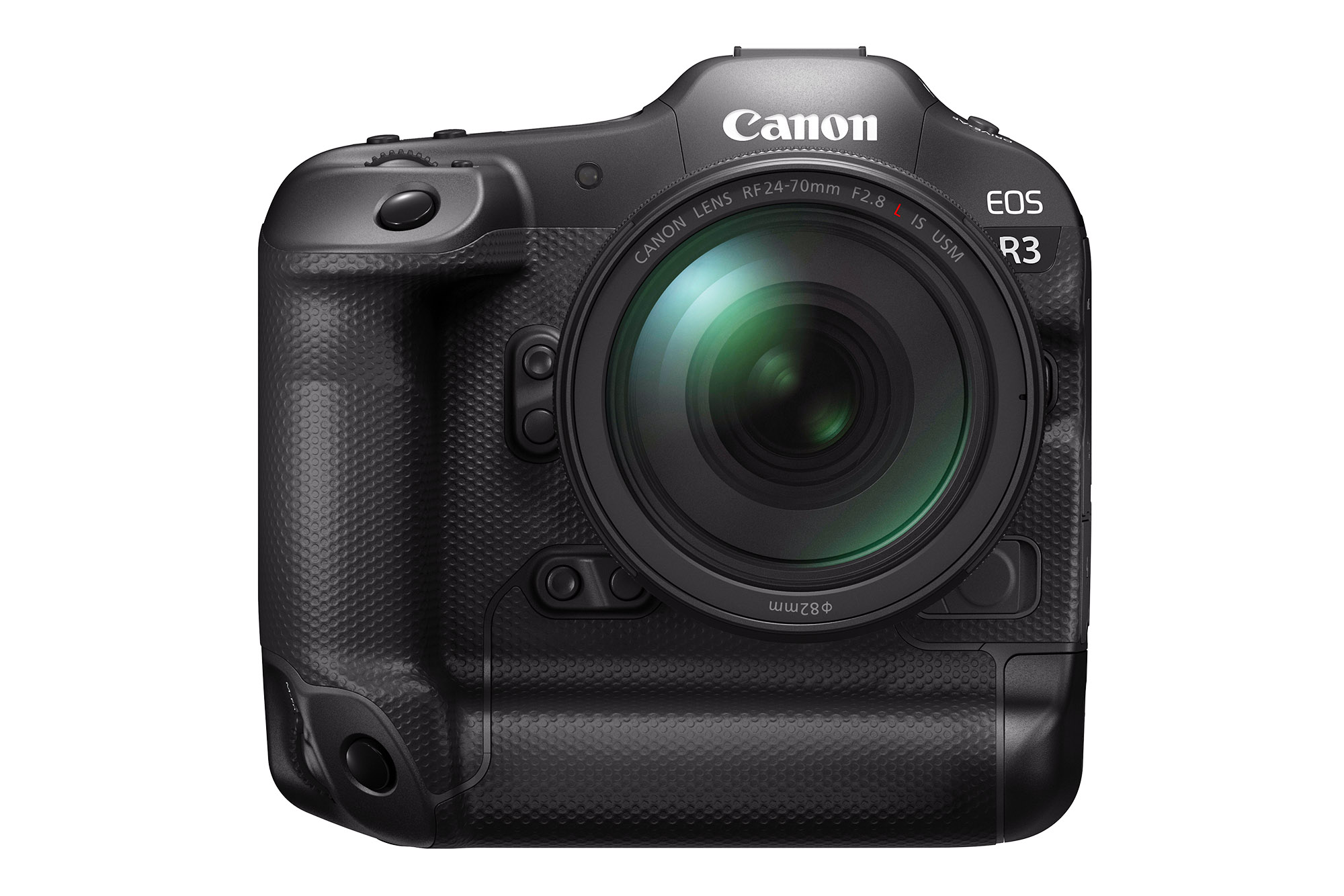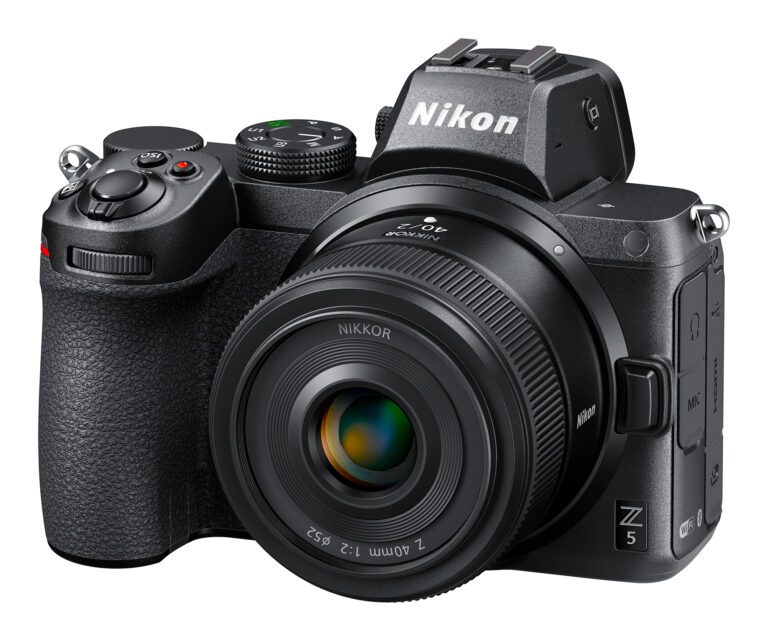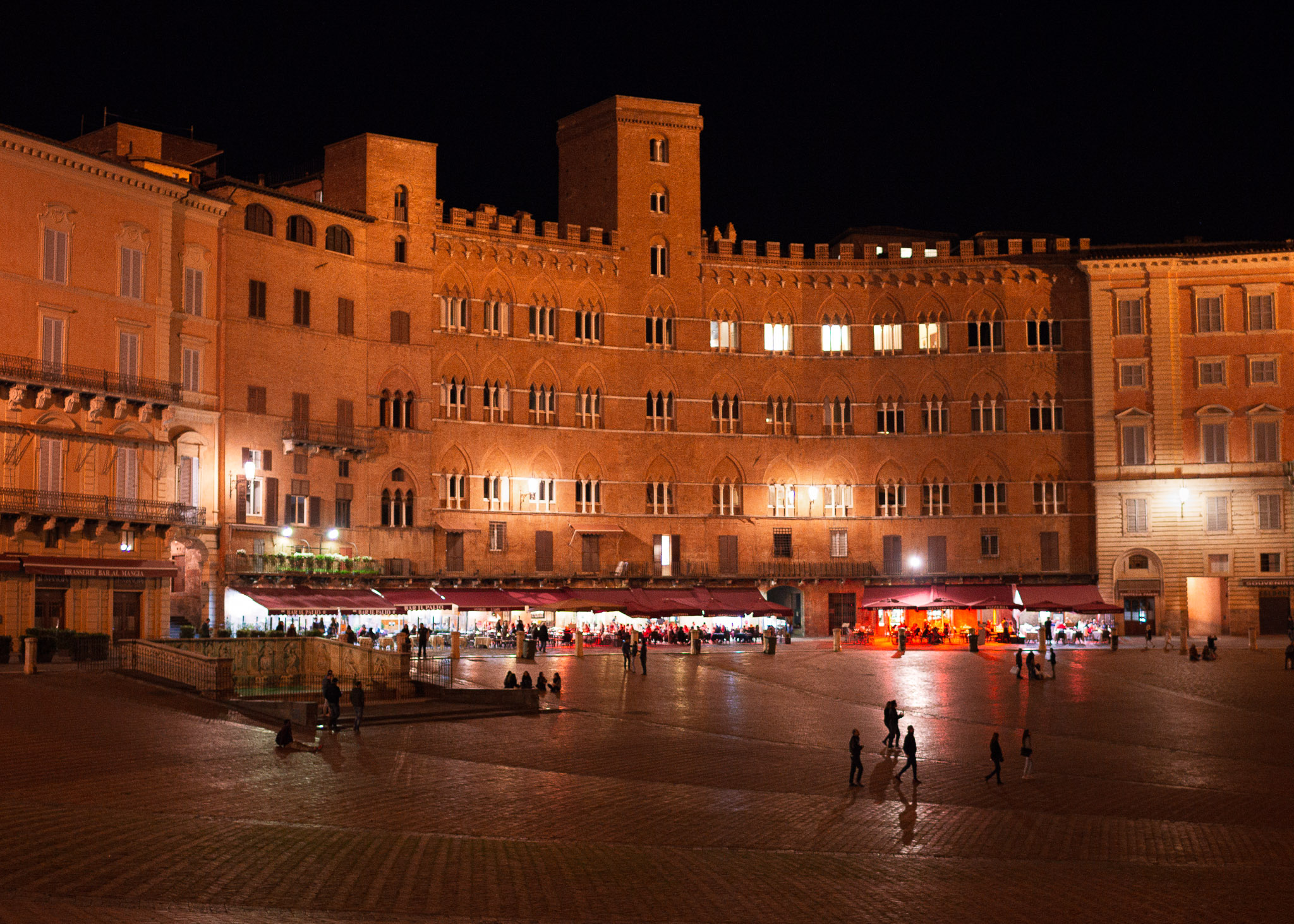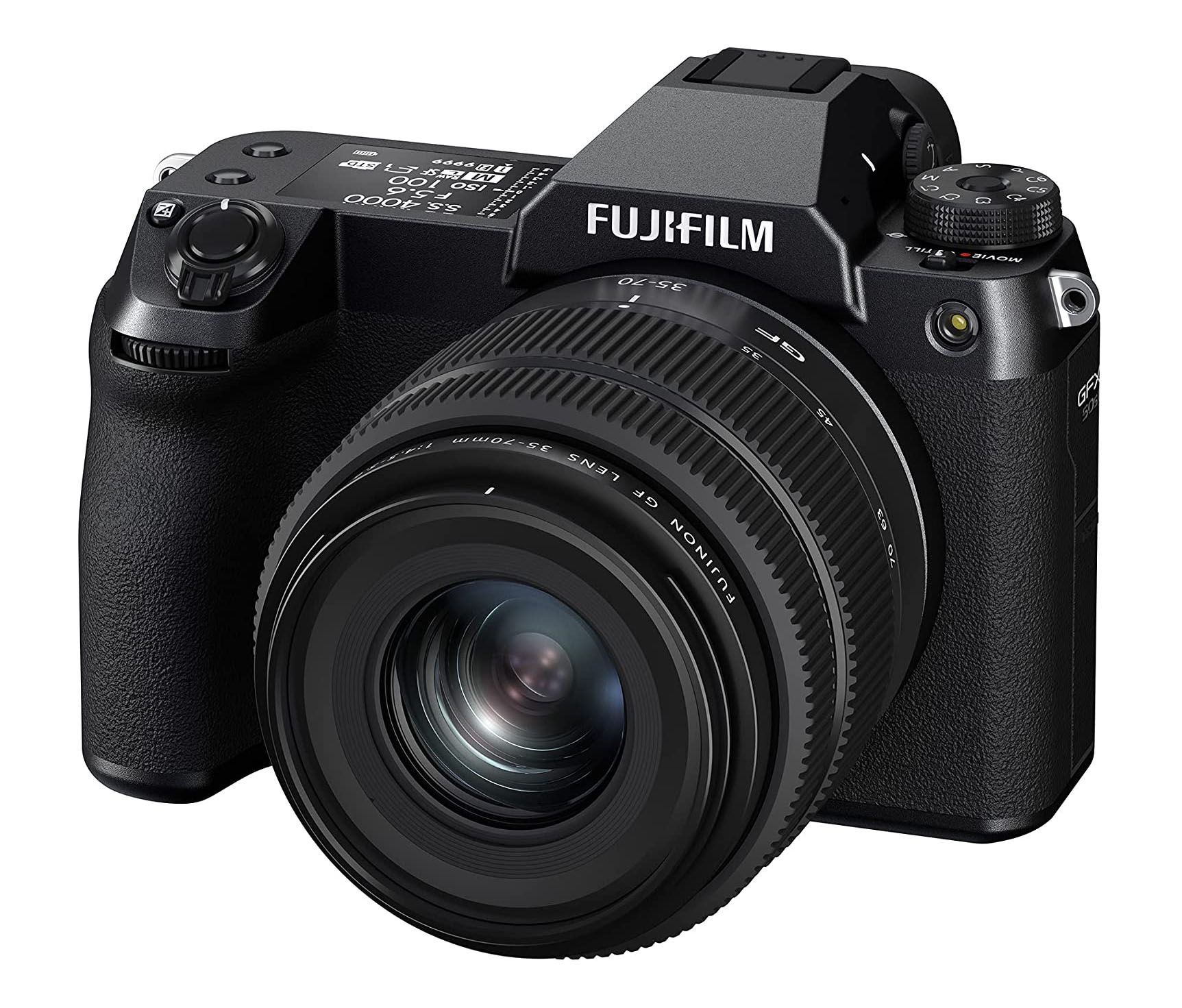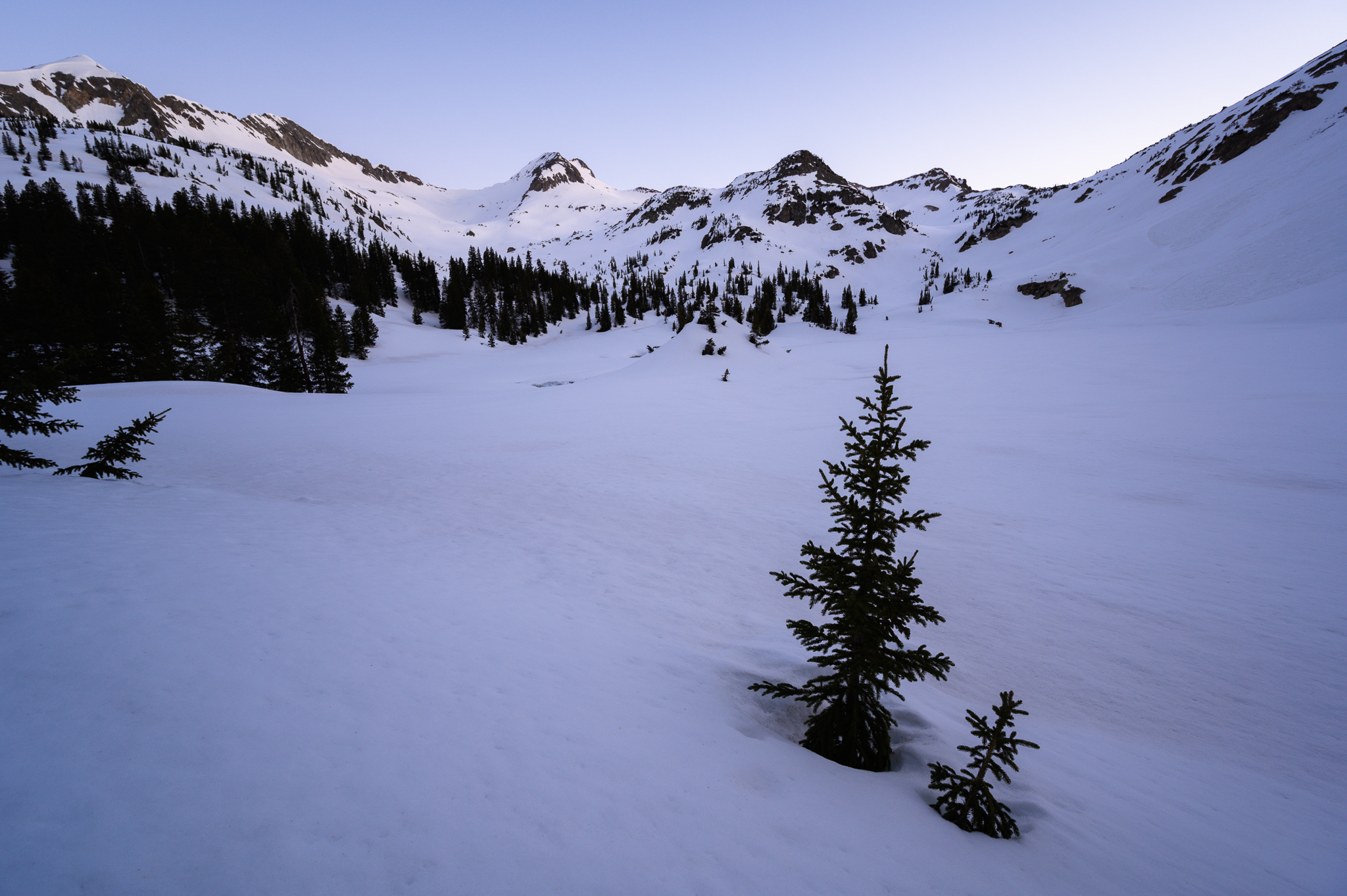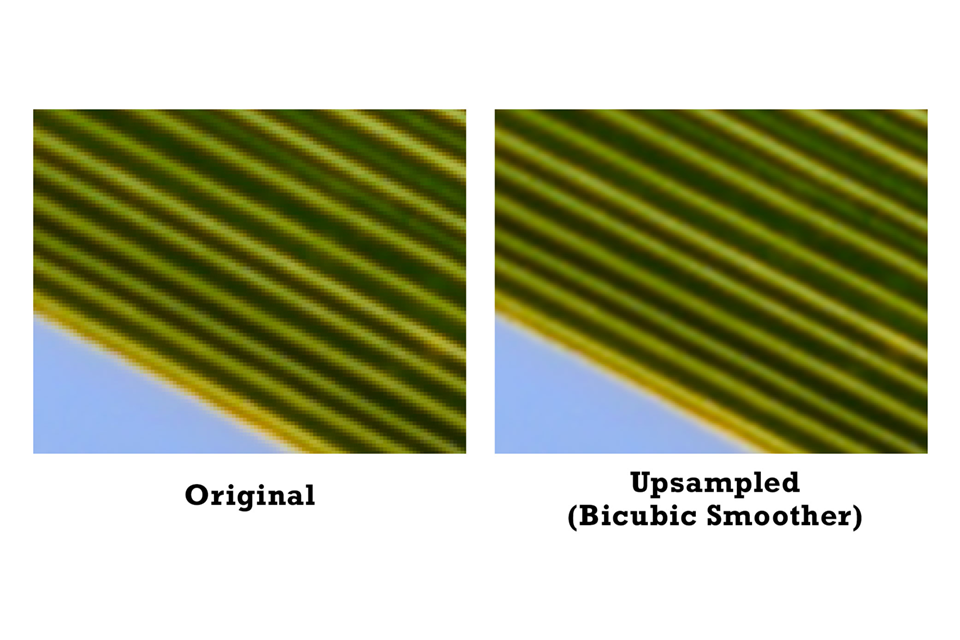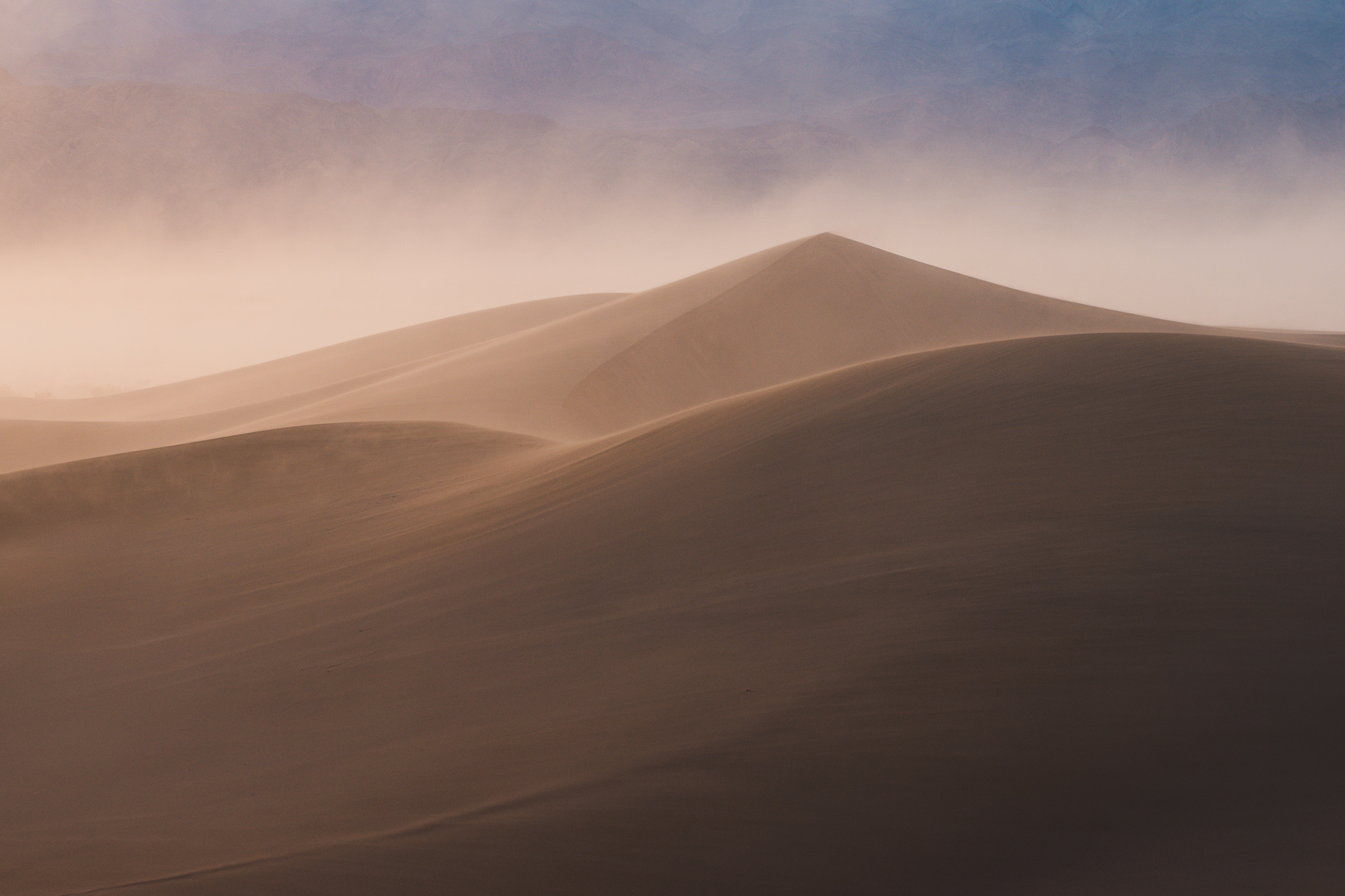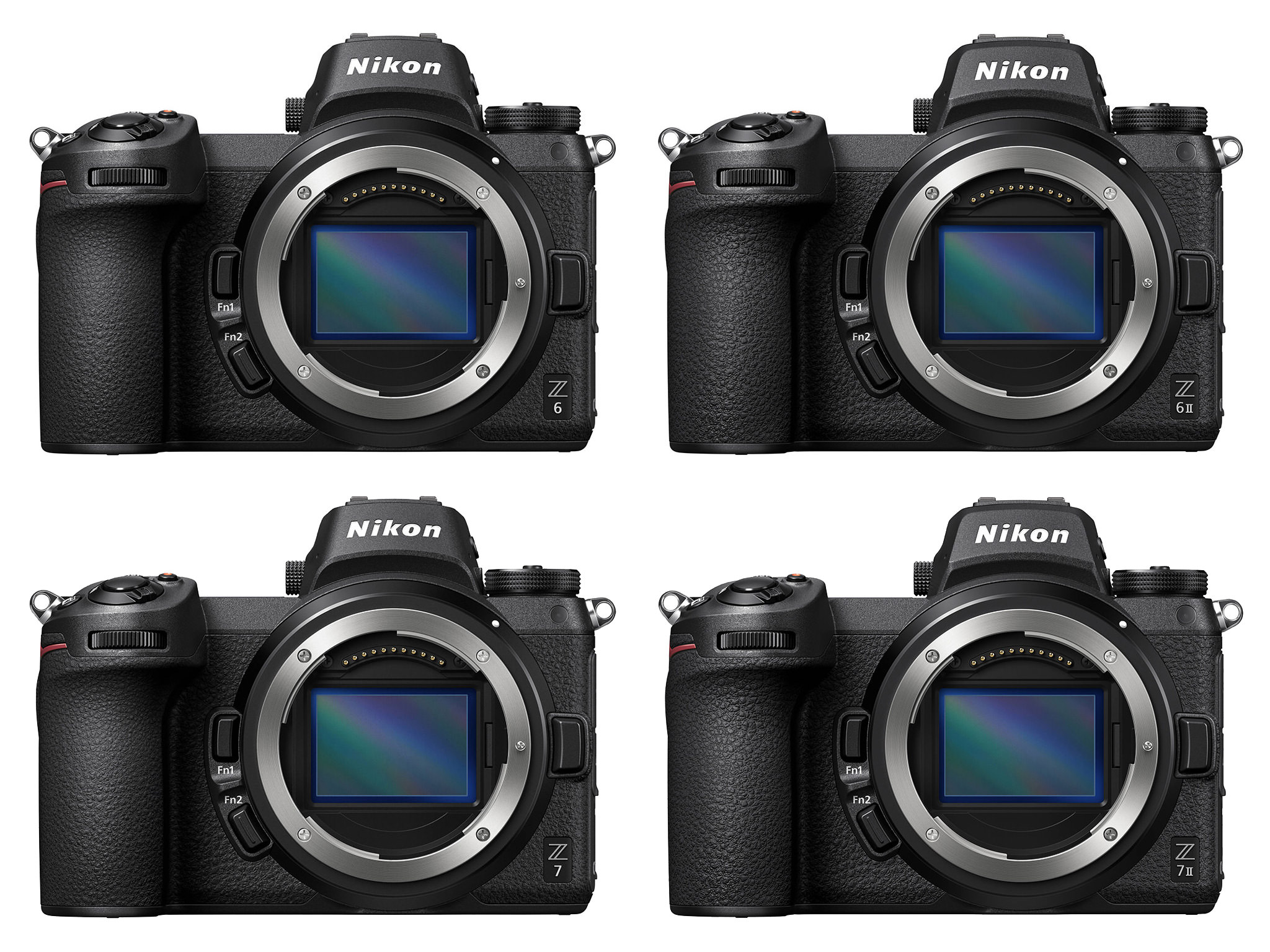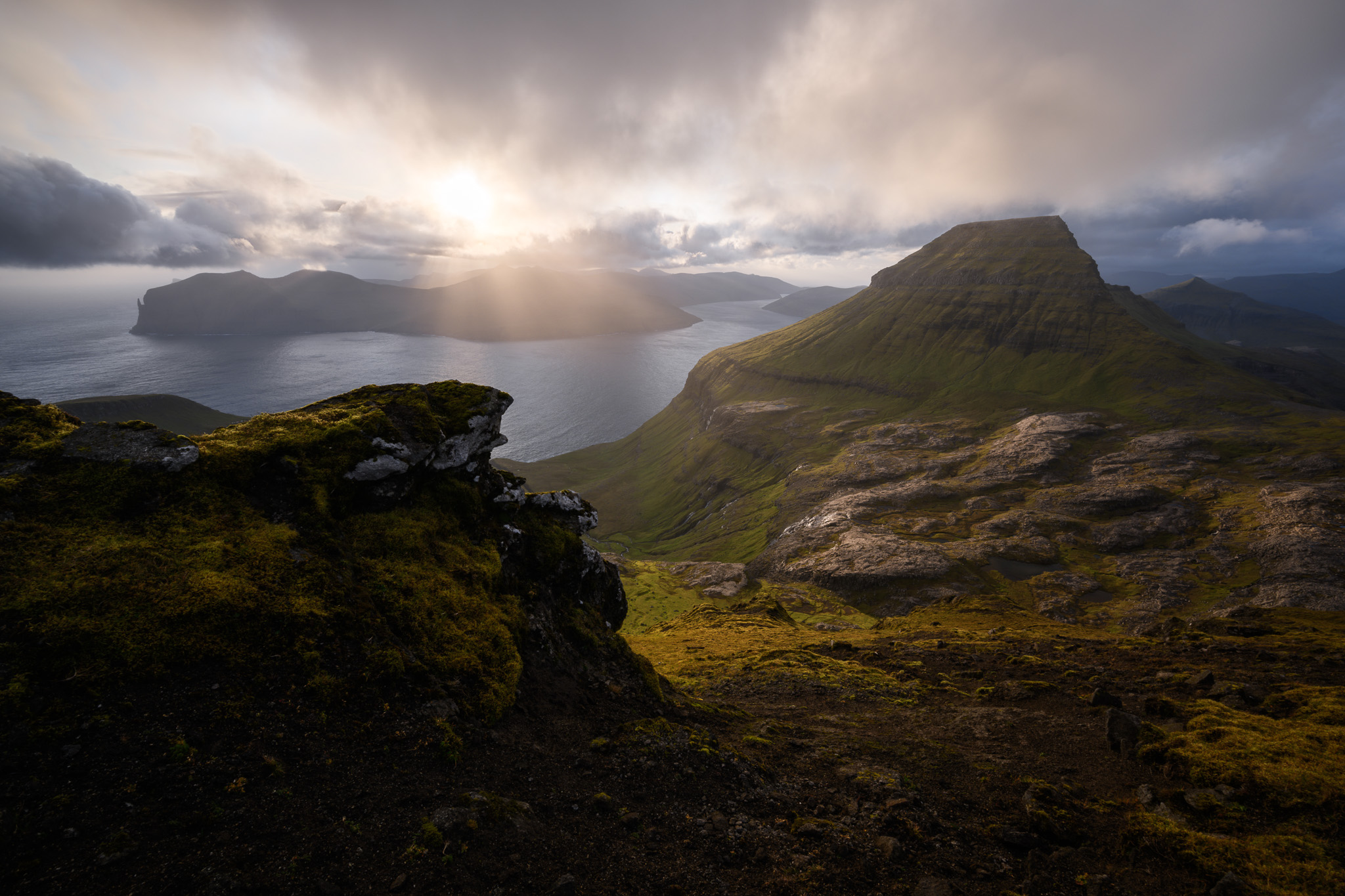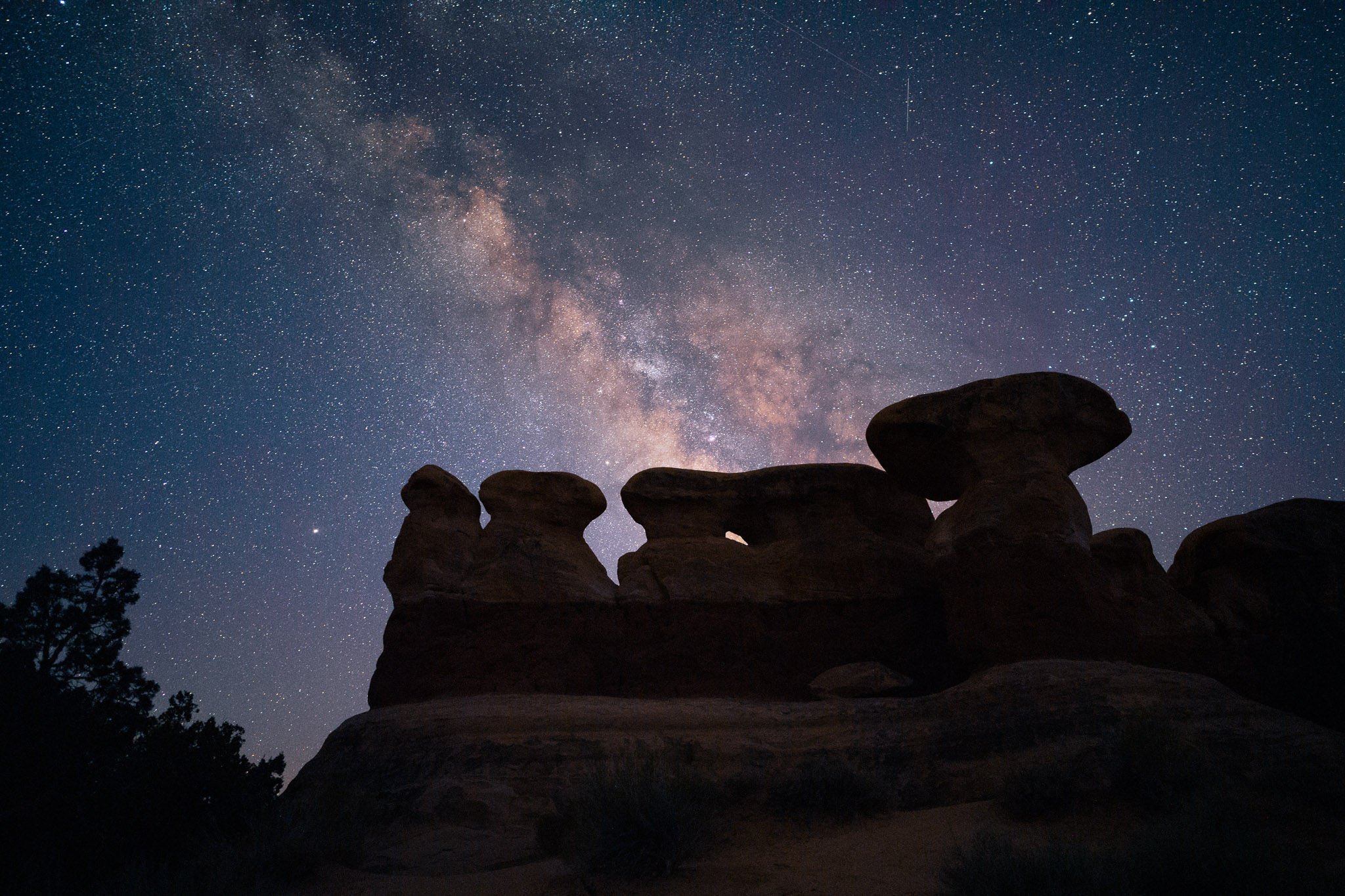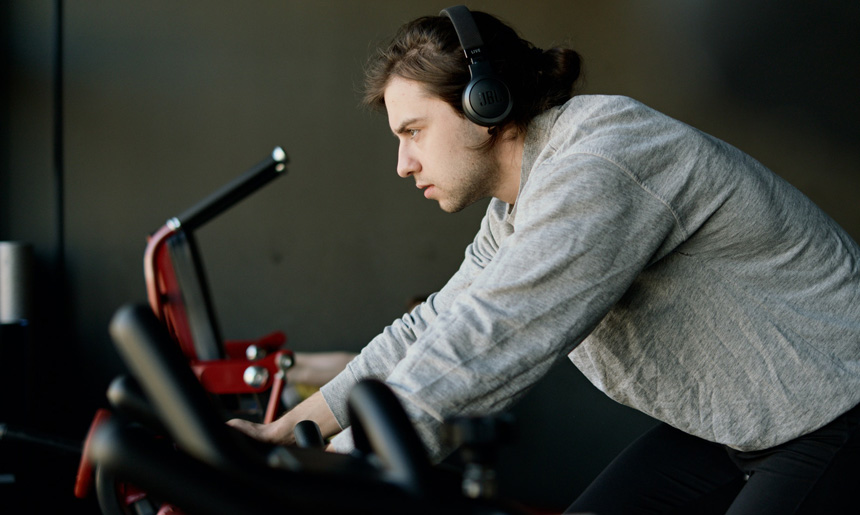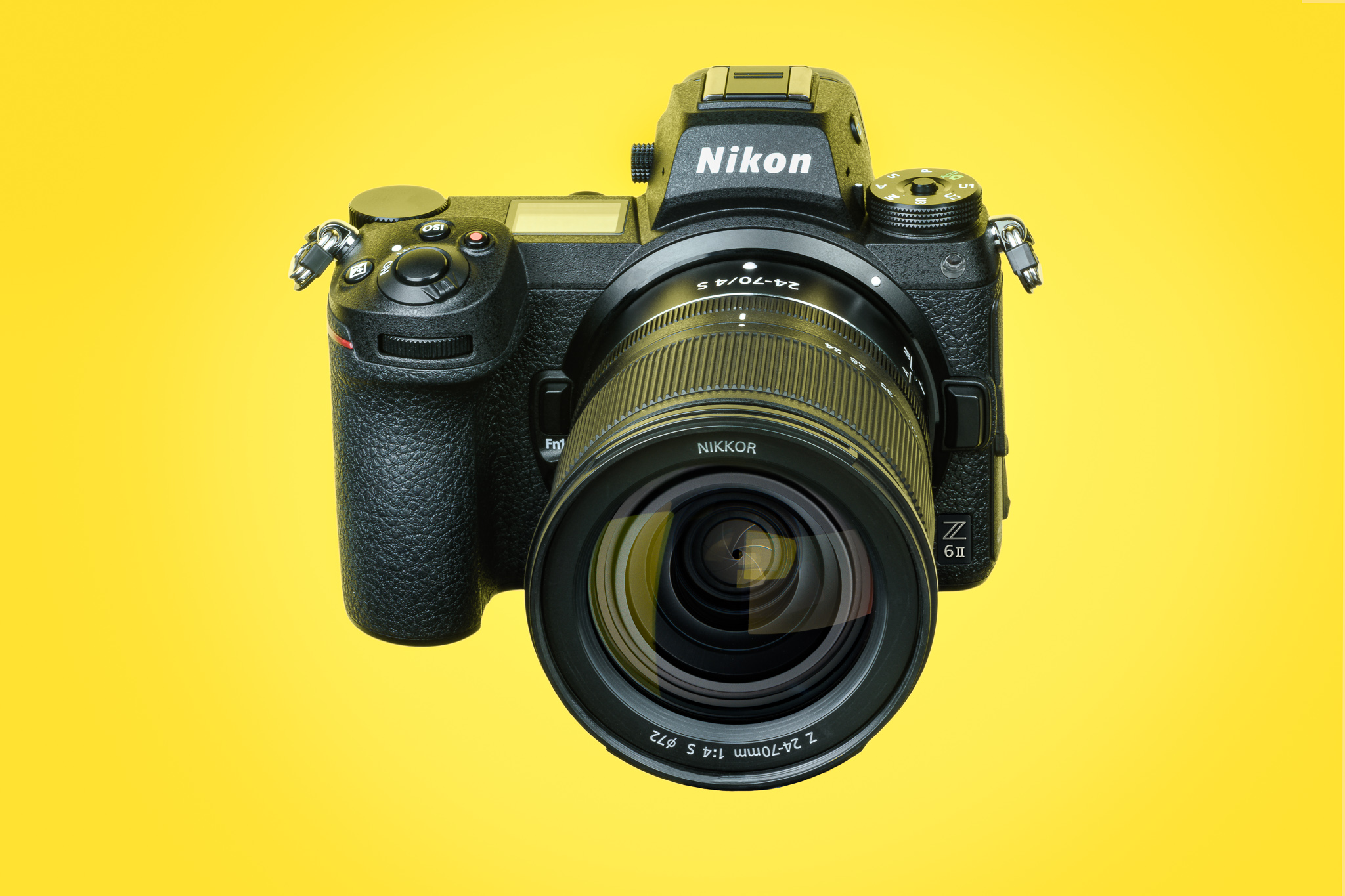
[ad_1]
Whether Nikon’s Z-series mirrorless system succeeds or fails depends disproportionately on cameras like the Nikon Z6 II. As a 24-megapixel, $2000, full-frame mirrorless camera, the Z6 II is aimed at many of Nikon’s target photographers: DSLR holdouts, Z6 upgraders, first-time Nikon shooters, and more.
Traditionally, even though $2000 is far from cheap, it’s a bit of a sweet spot for many camera companies and photographers. Lots of cameras around this mark have high-end features and don’t skimp on much compared to $3000+ flagships, making them a good value proposition for both hobbyists and professionals. The Nikon Z6 II is no exception.
In fact, the Z6 II is arguably the most important camera in Nikon’s lineup today. Photographers who buy a camera at the Nikon Z6 II’s level usually don’t stop at the camera and kit lens. Nikon’s entire ecosystem of high-end lenses, flashes, and other accessories depends on the sales of the Z6 II. That can’t necessarily be said of cameras like the Nikon Z50 or even the Nikon Z5, which target a broader audience who may only ever buy one or two lenses.
No wonder the Nikon Z6 II’s competition is so fierce; almost every camera company depends on this type of photographer to some extent. At the moment, there is particularly close competition from Sony and Canon (with the Sony A7 III, Canon EOS R, and Canon EOS R6), which we will compare throughout this review. Other companies like Panasonic, Fuji, Pentax, and Olympus also have cameras around this price point, although not all of them are full-frame or mirrorless.
The camera isn’t the only equipment that matters, either. Before you decide on the Nikon Z6 II, you need to make sure that Nikon’s lens lineup suits your needs. With a total of 16 lenses for the Z system at the time of this review, Nikon’s native mirrorless lens lineup isn’t as large as that of Sony, Olympus, or Fuji. Considering that the Nikon Z system is so much newer than the others, it isn’t too surprising, but that’s little comfort if you need a lens that Nikon doesn’t have. (You can fill in some gaps by adapting non-native lenses, such as with Nikon’s FTZ adapter, but this is not a permanent solution.)
So, how well does the Nikon Z6 II meet all these challenges? Further, is it a meaningful upgrade over the prior generation Z6? This review, with our extensive field and lab tests, answers those questions and more.

Nikon Z6 II Review: Specifications
Let’s start this review by taking a look at the Nikon Z6 II’s key specifications.
- Announced: October 14, 2020
- Sensor Resolution: 24.5 MP
- Native ISO Sensitivity: 100-51,200
- Sensor Type: BSI CMOS
- Sensor Size: 35.9 × 24.0mm FX sensor
- Optical Low Pass Filter: Yes
- In-Body Image Stabilization: Yes
- Image Processor: Dual EXPEED 6
- Viewfinder: EVF, 100% coverage, 0.8× magnification, 3.6 million dots
- Built-in Flash: No
- Storage Media: 1 CF Express, 1 SD (UHS-II)
- Max Continuous Shooting Speed: 14 FPS (12-bit lossless RAW @ single-point AF-C); 12 FPS (12-bit lossless RAW @ tracking AF-C); 10 FPS (14-bit lossless RAW)
- Buffer Capacity: 124 shots (12-bit lossless compressed RAW)
- Electronic Shutter: Yes
- Shutter Speed Range: 1/8000 to 900 seconds
- Focus System: Hybrid on-sensor phase detect with 273 autofocus points
- Video Maximum Resolution: 4K up to 60 FPS, 1080p up to 120 FPS
- LCD Type: 3.2″ touchscreen, up/down tilting, 2.1 million dots
- Battery Life: 340 shots (CIPA)
- Weight: 705 grams (1.55 pounds) body only, includes battery and card
- Dimensions (L×H×D), Excluding Protruding Viewfinder: 134 × 101 × 70 mm (5.3 × 4.0 × 2.8 inches)
- MSRP, Body Only: $2000 (check current price for discounts)

What’s Changed Since the Z6?
Although the specifications above may look familiar to existing Nikon Z photographers, there are plenty of new features on the Z6 II compared to the prior Z6. To show you exactly what areas Nikon has changed and improved, we’ve made a table that compares the features of the Z6 versus the Z6 II:
| Camera Feature | Nikon Z6 | Nikon Z6 II |
|---|---|---|
| Announced | August 23, 2018 | October 14, 2020 |
| Sensor Resolution | 24.5 MP | 24.5 MP |
| Low-Pass Filter | Yes | Yes |
| Sensor Type | BSI CMOS | BSI CMOS |
| Native ISO Sensitivity | ISO 100-51,200 | ISO 100-51,200 |
| In-Body Image Stabilization | Yes, 5-axis | Yes, 5-axis |
| Sensor Size | 35.9 × 24.0mm | 35.9 × 24.0mm |
| Image Size | 6048 × 4024 | 6048 × 4024 |
| Image Processor | EXPEED 6 | Dual EXPEED 6 |
| EVF Type / Resolution | QVGA / 3.6 Million Dots | QVGA / 3.6 Million Dots |
| EVF Coverage | 100% | 100% |
| EVF Improved Refresh Rate | No | Yes |
| EVF Improved Viewfinder Blackout | No | Yes |
| Viewfinder Magnification | 0.8× | 0.8× |
| Built-in Flash | No | No |
| Flash Sync Speed | 1/200s | 1/200s |
| Storage Media | 1x CFe / XQD | 1x CFe / XQD + 1x SD UHS II |
| Continuous Shooting Speed | 12 FPS (12-bit RAW), 9 FPS (14-bit RAW) | 14 FPS (12-bit RAW), 10 FPS (14-bit RAW) |
| Camera Buffer (12-bit Lossless) | 35 | 124 |
| Max Shutter Speed | 1/8000 | 1/8000 |
| Min Shutter Speed | 30 sec | Up to 900 sec |
| Autofocus System | Hybrid PDAF, 273 points | Hybrid PDAF, 273 points |
| Low-Light Sensitivity (f/2 Lens, ISO 100) | -3.5 to +19 EV (-6 to +19 EV with low-light AF enabled) | -4.5 to +19 EV (-6 to +19 with low-light AF enabled) |
| Eye AF in Wide Area AF | No | Yes |
| Eye AF in Video | No | Yes |
| Video Maximum Resolution | 4K @ up to 30p, 1080p @ up to 120p | 4K @ up to 60p, 1080p @ up to 120p |
| 4K Video Crop | 1.0× (30p) | 1.0× (30p), 1.5× (60p) |
| HDMI Out / N-LOG | 4:2:2 10-bit HDMI Output / Yes | 4:2:2 10-bit HDMI Output / Yes |
| HLG / HDR Out | No | Yes |
| Articulating, Touch LCD | Yes, Tilting | Yes, Tilting |
| LCD Size / Resolution | 3.2″ / 2.1 Million Dots | 3.2″ / 2.1 Million Dots |
| Wi-Fi / Bluetooth | Yes / Yes | Yes / Yes |
| Simultaneous Intervalometer + Timelapse Movie | No | Yes |
| Firmware Update via Snapbridge | No | Yes |
| Battery | EN-EL15b | EN-EL15c |
| Battery Life (CIPA) | 310 shots | 340 shots |
| Battery Life (Video) | 85 min | 100 min |
| Battery Grip | MB-N10 | MB-N11 |
| Battery Grip Controls | No | Yes |
| Continuous External Power | No | Yes |
| USB Power + Transfer | No | Yes |
| Weather Sealed Body | Yes | Yes |
| USB Version | Type-C 3.1 | Type-C 3.1 |
| Weight with Battery and Card | 675 g (1.49 lbs) | 705 g (1.55 lbs) |
| Dimensions (L×H×D); Depth Excludes Protruding Viewfinder | 134 × 101 × 70 mm (5.3 × 4.0 × 2.7″) | 134 × 101 × 70 mm (5.3 × 4.0 × 2.8″) |
| MSRP As Announced | $2000 | $2000 |
| MSRP Today | $1400 (check price) | $2000 (check price) |
As you can see, despite some similarities between the Z6 and Z6 II, the newer camera is a clear improvement overall. While some of the major specifications have remained the same, such as the 24-megapixel sensor, most other areas like processing speed and video features clearly lean in the Z6 II’s favor. In fact, aside from a very slight increase in camera weight and size, every feature on the Z6 II matches or beats those of the Z6 II. Nikon didn’t go backward in any area.
One improvement that we are especially happy to see is the addition of a second memory card slot to the Z6 II. The original Z6 and Z7 only took a single card (XQD, though also compatible with CF Express), while the Z6 II has a second slot meant for SD cards. We plan to use the SD card slot as a backup rather than overflow, but both options are available in the Z6 II’s menu.
As for the other improvements on the Z6 II, some of them may seem small individually, but they add up. For example, the Z6 II’s jump from 10 FPS to 12 FPS shooting isn’t much on its own, but combined with the bigger buffer (124 rather than 35 lossless 12-bit RAW images), it makes the Z6 II a significantly better camera for action photography than its predecessor.
Video shooters will be pleased to see that the Z6 II can now shoot 4K video at 60 frames per second rather than 30 (albeit at a 1.5× crop). This allows for slow-motion recording without switching to 1080p. The Z6 II adds some other useful video features as well: Eye AF, a longer video battery life, and HLG / HDR output via the HDMI port. The prior Z6 was already an excellent camera for video work (and is even the secondary filming camera for our YouTube channel) but the Z6 II has really bumped things up a notch.

The Z6 II’s other improvements are also welcome sights, such as the extended shutter speeds in manual mode, improved timelapse settings, and compatibility with a “real” battery grip that has vertical controls (unlike the largely useless MB-N10 for the Nikon Z6). The Z6 II also adds one of the biggest features that we were hoping to see: an option for a clutter-free display when shooting in live view.
Although some of the Z6 II’s changes are the standard “bump the numbers” upgrades (such as the FPS boost), it’s also clear that Nikon listened to customer feedback extensively when designing the Z6 II. Nikon could have taken the already very good Z6 and given us a meaningless boost in megapixels, but they instead focused on fixes that actually improve the usability of this camera. It’s even possible that such a decision will lead to fewer sales than trying to win the megapixel wars, but it’s a better outcome for photographers at the end of the day.
Nikon Z6 II Review: Handling and Feature Set
One of the most important parts about a camera is how well it handles in the field. Historically, Nikon’s intuitive handling has earned it plenty of praise, including in most of our reviews. But the Nikon Z6 II is only the second generation of Nikon’s full-frame mirrorless system, and early camera generations tend to have more handling flaws in general. While the Z6 bucked this trend somewhat, it did have a few mild handling issues, most of which we wrote about in our Nikon Z firmware update wishlist article. Has the Nikon Z6 II fixed any of these handling issues? Further, how well does its feature set complement a camera of this level?
To answer those questions, let us first take a look at the camera’s control layout.
Controls
Anyone who’s used a Nikon Z camera will be familiar with the Z6 II’s controls. In fact, the button layout of the Z6 II is identical to that of the Z6, Z7, and Z7 II – certainly not a bad thing, considering that these cameras all have intuitive layouts.
On the top panel, you’ll see a familiar design with the PSAM dial on the left and all other buttons and dials on the right:
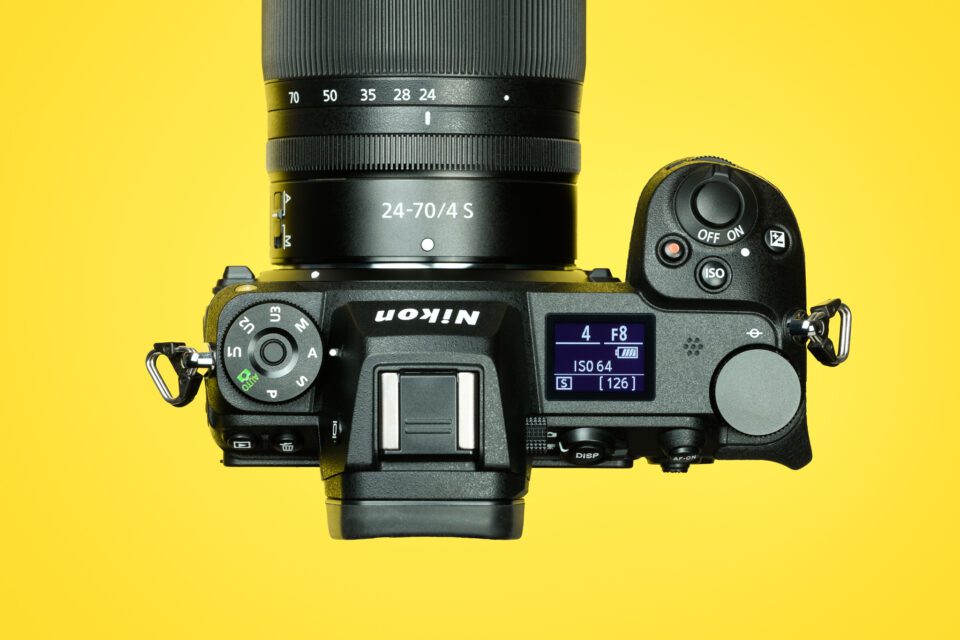
Nikon has decided to continue the trend of including a U1, U2, and U3 user mode on the Z6 II’s PSAM dial as opposed to the menu banks it has historically used on high-end DSLRs. Compared to menu banks, the U1/U2/U3 setup is more intuitive and preferred by most photographers. Given that Nikon traditionally only offered U1/U2/U3 user modes on its low-to-mid-tier DSLRs, it is encouraging to see them on all the Z Series cameras so far. We recommend using something like U1 for landscapes, U2 for action, and U3 for portraits.
The setup process is easy: Set your camera however you want, then go to Menu > Setup Menu > Save User Settings to lock those settings into U1, U2, or U3. The Z6 II then remembers almost all your settings for quick recall, although note that, for whatever reason, the drive mode you’ve selected (such as single-shot, continuous high, self-timer, etc.) will not be saved.
Aside from the U1/U2/U3 modes, the other controls on the top panel are generally self-explanatory. You may be interested to hear that the movie record button (the one with the red dot in the center) doesn’t do anything if you’re shooting stills, so the Nikon Z6 II lets you assign it to perform a custom function. We use it as a quick way to access autofocus settings, but there are many different options available. You can customize its behavior by going to Menu > Custom Setting Menu > Controls > Custom Controls > Movie Record Button.
Now let’s take a look at the Z6 II’s rear controls and button layout:
Just like with the top panel, the rear controls are identical to those of the Nikon Z6, Z7, and Z7 II. Nikon has managed to fit a joystick, AF-On button, and all the usual controls in a very comfortable and ergonomic manner. That’s no small feat considering the compact size of the Nikon Z6 II.
Pay particular attention to the AF-On button. If you have not used AF-On before, we highly encourage you to start. It’s a way to autofocus that’s separate from half-pressing the shutter button, which is useful in a wide variety of circumstances, as covered in our back-button focus article. (We also recommend disabling autofocus from the shutter button, which you can do at the Custom Setting Menu > Autofocus > AF Activation > AF-On Only.)
Right below the AF-On button is the joystick, useful for moving quickly among the Z6 II’s 273 focus points. You can also assign the joystick to a custom function – such as reverting the focus point to the center or zooming in 100% on your subject – when you press it like a regular button. To customize it, go to Menu > Custom Setting Menu > Controls > Custom Controls > Sub-Selector Center.
Below the joystick, the “i” button brings up an abbreviated menu to allow you to make quick adjustments to camera settings. You can change which options appear in the “i” menu by going to Custom Settings Menu > Customize i Menu.
The other buttons on the back of the Z6 II are pretty self-explanatory. There is the traditional multi-selector with the central “OK” button for navigating the menu and focus points. Below, the four buttons allow you to zoom in, zoom out, open the menu, or change the camera’s drive mode (i.e., self-timer, single-shot, or continuous shooting). There are also buttons for reviewing or deleting your images at the top left of the Z6 II, as well as a stills/video switch and a DISP button to change the information displayed on the camera’s LCD or viewfinder. This is all standard fare for the Nikon Z series, and even Nikon DSLR users will feel familiar with all these options. The menu layout is also the same as always.
On the left and right sides of the viewfinder, not easily visible in the photo above, there are two additional controls: the “monitor mode” button on the left, and the diopter on the right. Monitor mode is a way to select between the rear LCD, electronic viewfinder, or some combination of the two (such as automatically switching when you put your eye to the viewfinder). The diopter is useful for photographers with different eyesight to ensure that the viewfinder is always comfortable to look through. Thankfully, it is difficult to adjust the diopter by accident. You need to pull the dial away from the viewfinder before spinning it forward and backward to make adjustments.
The front of the camera (shown at the very top of this review) has the usual lens release button as well as a customizable Fn1 and Fn2 button. We find it useful to assign either Fn1 or Fn2 to “Access Top Item in My Menu.” That way, you can add your commonly-used menu settings to the “My Menu” tab and access them without having to search through the Z6 II’s entire menu each time.
As for the Z6 II’s build quality, it retains the weatherproofing and high-tolerance design of the Z6. We used the Z6 II in dusty, windy, and rainy environments without issue. We’ve also been constantly using the prior generation Z6 since it first shipped more than two years ago, and have yet to experience any issues due to shooting in harsh weather.
Like everything else about the Z6 II’s handling, the grip on the front has also remained the same since the Z6. It’s a very comfortable grip considering that it’s a small mirrorless camera, and we found that shooting with the Nikon Z6 II for a full day of shooting was not a problem, even with a heavy lens like the Nikon Z 70-200mm f/2.8. However, photographers who have big hands may find that the grip isn’t quite tall enough, so it’s worth considering a product like this that doubles as an L-bracket and grip extension.
All in all, the Nikon Z6 II has a comfortable and intuitive design, although Nikon did play it a bit safe by leaving things exactly the same as they were on the prior generation Z6.
Our Takes
Nasim: The Z6 II does a dance between “intermediate” and “pro,” just like the Z6 did. I like the AF-On button and two Function buttons on the front, and the controls are very good overall. But there’s still no dedicated AF Area button or metering button like you’d find on most of Nikon’s other pro cameras. That could have been fixed with a third or fourth function button somewhere on the camera.
Spencer: Agreed. The Z cameras have a great layout, but I wish that Nikon had added at least one more custom button to the Z6 II. Maybe the next iteration could use the direction pad for extra controls, like we’ve seen on some Sony and Fuji cameras.
Nasim: Or you could buy the 14-24mm, 24-70mm, and 70-200mm f/2.8 trilogy to get an extra custom button!
Spencer: I’m sure Nikon would be thrilled if I bought all those just to get one more button. My wallet, on the other hand…
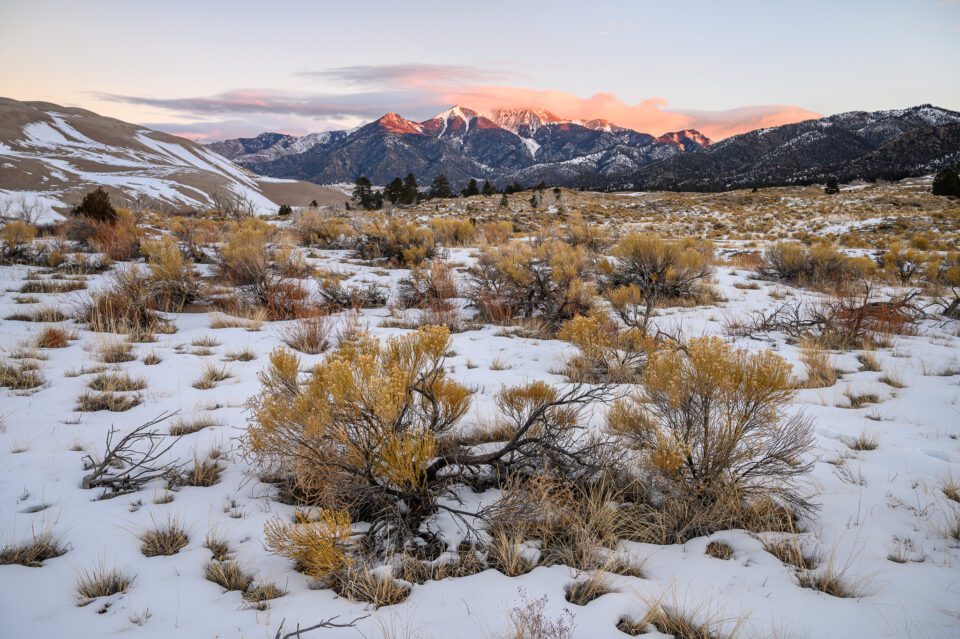
Dual Memory Card Slots
For the first time on a high-end Nikon Z camera, the Z6 II has dual card slots rather than a single CF Express type slot. (The Z7 II, announced alongside the Z6 II, shares this setup, while the less expensive Z5 has dual SD slots.)
This answers one of the biggest requests from Nikon Z6 and Z7 users, which was the inability to use a second card slot for live backup of their images. For some photographers, a second card slot was a must-have, and they would not consider a camera without one. While this may have hurt Nikon’s sales on the previous generation, the company’s three newest Z-series cameras all have dual card slots, so we’re hopeful that Nikon has changed course on this issue for good, at least for its high-end cameras.
On the Z6 II, one of the two memory card slots is compatible with CF Express cards, while the other is compatible with UHS-II SD cards. There is also backward compatibility for XQD cards and UHS-I SD cards, although CF Express and UHS-II can get you a bit more speed.
What are the differences between these card types? Although you should check out our article on memory cards for more information, the basic idea is that CF Express cards are larger and more expensive than SDs, but also tend to be much faster and more durable. However, many photographers have collected a large number of SD cards over the years, while CF Express is a much newer type. Nikon is trying to get the best of both worlds with the Z6 II.
As you can see below, the two card slots are stacked on top of each other on the right-hand side of the Nikon Z6 II. This is the same spot as on the previous generation Z6, although the compartment is a bit larger this time in order to accommodate the additional slot.
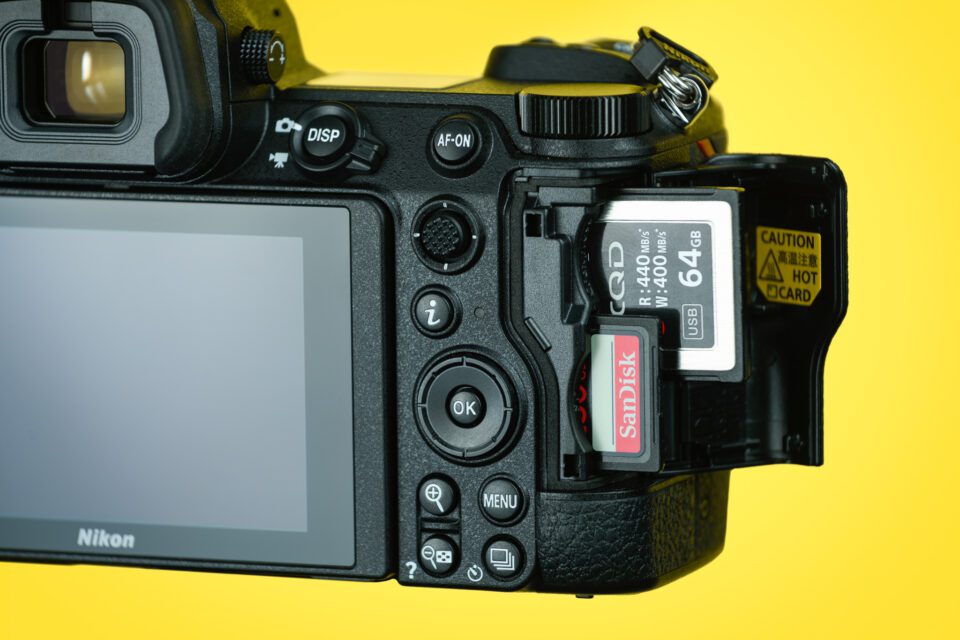
The Nikon Z6 II offers three options for the secondary card’s function: overflow, backup, and RAW primary/JPEG secondary. Our recommendation is to use the secondary card slot for backup unless you have a particular reason to use one of the other settings. A live backup in the field can be invaluable in case you lose or damage one of the cards, or on the rare occasion that the card malfunctions. Even though the odds may be slim, the downside is huge, and it isn’t a good idea to have all your eggs in one basket if you can avoid it. That’s especially true for the Nikon Z6 II, which is a good camera for wedding and event photography, where losing any photos is a nightmare.
Our Takes
Nasim: When I talked to a Nikon representative about the Z6 and Z7 a couple years ago, he told me the single card slot was a compromise because of space constraints. Looking at the Z6 II, I can believe that. Just look at how the card slots on the Z6 II barely fit on top of each other!
Spencer: I’m glad they went with an SD card for the second slot rather than another CF Express type. I already have a lot of fast, high-capacity SDs from years of shooting with Nikon.
Nasim: The only issue here is going to be speed. CF Express is much faster than SD, and plenty of photographers have slow SD cards they may want to use with the Z6 II. But that can bring the Z6 II’s buffer capacity down in a hurry.
Spencer: Agreed. Same for videographers planning to shoot 4K. The minimum SD card I’d recommend is a UHS-I that’s U3 certified, but something faster would be better. Hopefully, most photographers considering the Z6 II have some cards that fit the bill.
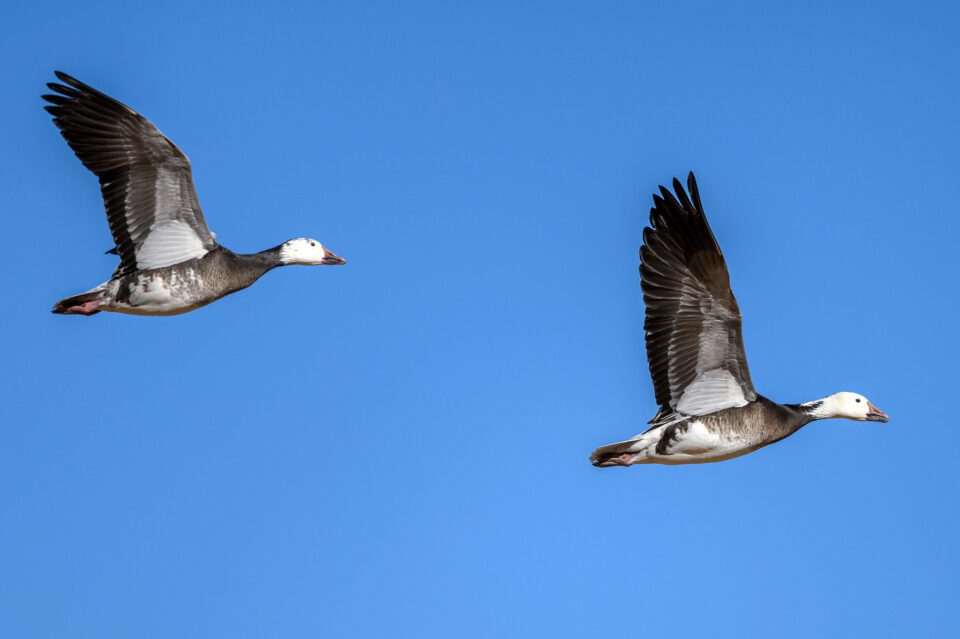
Clutter-Free Display Mode
One of the biggest and most bizarre problems with the previous generation Z6 and Z7 is the inability to get a completely clear LCD in live view. In other words, your shooting data – shutter speed, aperture, ISO, metering mode, battery life, and card space – never leave the screen. This is as clear as you can get it:
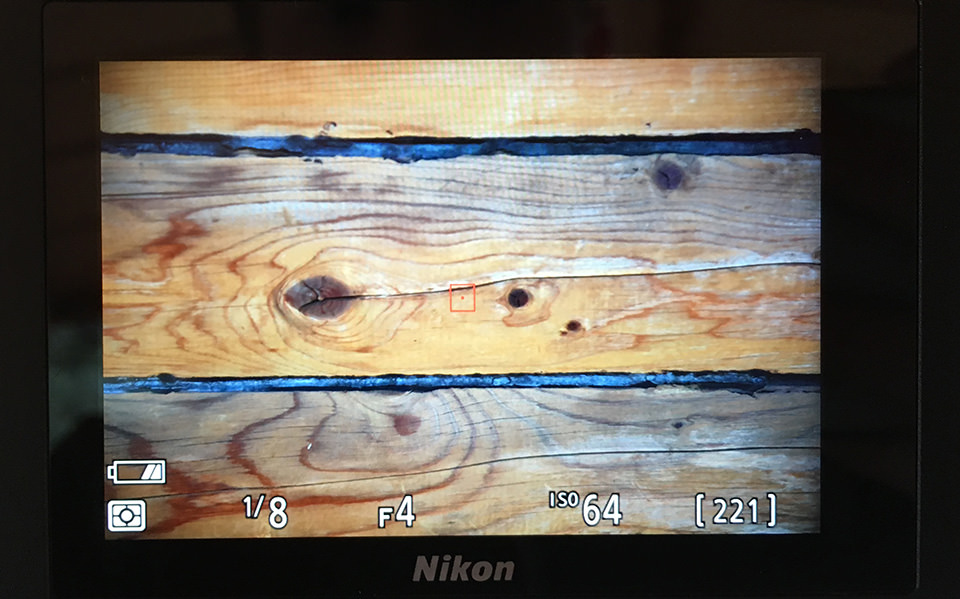
This is no small issue on the Z6 and Z7 (as well as the Z50 and Z5) because it interferes with one of the most important parts of photography: composition. Sometimes, this data covers up elements at the bottom of the composition in a way that can lead to incorrect framing. It’s a particularly bewildering issue considering that every other mirrorless competitor to the Z6 and Z7 has the option to hide all the shooting data and get a clear view of the scene.
The Z6 II finally allows this data to be hidden, although the implementation is not intuitive. Rather than simply adding a clutter-free option to the “DISP” button on the back of the camera, the only way to hide this information is to assign one of your custom buttons to “Live view info display off.” This means you will have one less custom function button at your disposal.
Given that the Z6 II has a top LCD with most of your important shooting information anyway, there’s no reason for Nikon to make it so difficult to enable the clutter-free display. Nevertheless, we’re willing to give Nikon some credit for listening to customer complaints and adding this option in the first place, even though the implementation is flawed.
Our Takes
Nasim: I can’t believe that we still don’t have a good way to enable the clutter-free display. Having to assign it to a custom button is ridiculous! Just put it on the DISP button like everything else.
Spencer: The DISP button would be a better place for it, but part of me is just glad that Nikon fixed the issue at all. I wasn’t sure they would. Putting it on one of my custom buttons is weird, but it’s a price I’m willing to pay.
Nasim: I still don’t see why a firmware update couldn’t add this to the DISP options. That would be the best solution, especially if Nikon released the same firmware update for its other Z cameras. But I guess if Nikon were going to do that, they’d have done it already.

Rear LCD and Electronic Viewfinder
The rear screen on the Nikon Z6 II is the same as on the Z6: a 3.2-inch touchscreen capable of tilting up and down, but not flipping sideways like on some cameras. Thanks to the screen’s 3×2 aspect ratio, it displays your images larger than on LCDs with a 4×3 aspect ratio, such as Nikon’s DSLRs.
As for the electronic viewfinder (EVF), the Z6 II’s 3.6-million dot display is broadly similar to the one on the Z6. However, there are a couple improvements. First, the viewfinder blackout times have been reduced during high-speed shooting. This change is quite subtle, and even with the Z6 side-by-side, it was hard for us to see a difference. The other improvement is more meaningful: When the rear LCD is tilted up or down, the Z6 II assumes you’re using the LCD, and the EVF automatically goes dark.
This feature is more important than it may seem, considering that the Z6 II – like its predecessor, the Z6 – has an oversensitive EVF proximity sensor. When using live view on the prior generation Z6, even something small like a shadow passing in front of the proximity sensor or a speck of dust landing on it can cause the EVF to turn on erroneously. If the EVF proximity sensor gets a bit dirty or dusty, it can act as if someone is permanently looking through the EVF. The problem can get so bad that the “automatic display switch” mode – where the camera automatically selects between the EVF or the rear LCD depending on which one is in use – can be almost completely useless.
The proximity sensor is still very sensitive on the Z6 II, if not exactly the same; our tests couldn’t show any differences. But in practice, the Z6 II’s EVF works much better because of Nikon’s clever decision to prevent the EVF from engaging whenever the rear LCD is tilted out. The result is that shadows and dust specks no longer engage the EVF incorrectly, assuming your LCD is tilted even a little bit out (which is how many landscape photographers and others use the rear LCD anyway). It’s not a perfect solution, but it’s much better than it was before.
Nikon could still improve upon the EVF by making it higher resolution to match its competitors – most of which are 5.76 million dots – and bumping up the refresh rate from 60 Hz to something like 120 Hz. But in day-to-day use, the Z6 II’s electronic viewfinder is a pleasure to use. There’s no issue with flickering or low contrast. Because of the 60 Hz refresh rate, lag is only about 17 milliseconds behind reality (0.017 seconds), which is hardly ever noticeable. It’s also larger than the EVFs from the competition at 0.8× magnification rather than 0.76× or 0.78×.
Our Takes
Nasim: On paper, the Nikon Z6 II’s EVF is about on par with the competition or maybe a bit behind it. But I’ve used all these cameras for actual shooting, and the Nikon Z system has some of the best EVFs on the market.
Spencer: As good as the EVF is, I care more about the rear LCD for my landscape photography. It’s large and sharp on the Z6 II, but Nikon needs to catch up to the competition and make a dual-axis tilt LCD next time, or full tilt-flip. The current setup isn’t great for vertical photography at low angles.
Nasim: Some photographers are against full tilt-flip screens because they don’t work well with L-brackets. But it’s still possible to find a compatible L-bracket, if you’re willing to pay a bit extra.
Spencer: In this case, I am!

Extended Shutter Speeds
So far, all of Nikon’s Z-series cameras have had a custom “T” exposure mode for arbitrarily long exposures, but the extended shutter speeds on the Z6 II take this a step further. Rather than having to press the shutter button at both the beginning and the end of your exposure – and probably set a timer on your phone to make sure you’re exposing for the proper duration – you can just set it and forget it on the Z6 II. To be specific, you can set any of the following shutter speeds on the Nikon Z6 II beyond 30 seconds:
- 60″
- 90″
- 120″
- 180″
- 240″
- 300″
- 480
- 600″
- 720″
- 900″
It’s a bit of an odd spread of shutter speeds – a mix of full stops, half stops, and third stops, seemingly at random – but it is nonetheless a welcome sight. For landscape photography after dark (or during the day with an ND filter), a 30 second shutter speed isn’t always enough. The “Time” and “Bulb” exposure modes are helpful, but this makes things even easier.
Note that these extended shutter speeds are not enabled by default. You need to turn them on by going to Custom Setting Menu > Shooting/Display > Extended Shutter Speed (M) > On. Also keep in mind that these extended shutter speeds only work in manual mode and not in program, shutter priority, or aperture priority.
The last bonus about using these extended shutter speeds on a Nikon Z camera is that there is no possibility of light leaks through the viewfinder, as is sometimes a problem with long exposure photography. That’s because, unlike a DSLR, the EVF on a mirrorless camera is not directly connected to the lens’s optical path, and thus there is no way for light to reflect into your imaging system through the viewfinder. This applies to all mirrorless cameras and isn’t unique to the Z6 II, but it’s still nice.
Our Takes
Spencer: I used the “T” exposure on my Z6 for years to get these sorts of results. It’s great that Nikon added them directly.
Nasim: There are some potential creative applications here that wouldn’t be possible with the T mode. Long exposure timelapses come to mind. The T mode is useful, but these extended shutter speeds are going to be more convenient for most photographers.
Spencer: Have you taken any good sample photos with this feature yet? We should add one to the review.
Nasim: No, but we can put up a long exposure photo from the Z7 II instead. No one will notice.
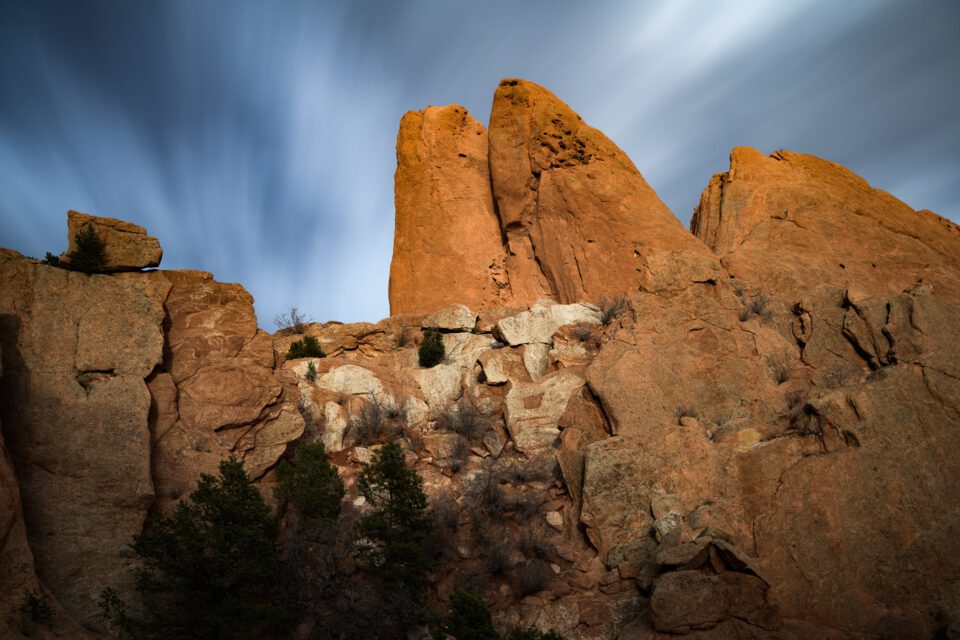
New Timelapse Options
The Nikon Z6 II adds two new timelapse shooting options compared to the Z6: First, the ability to record a timelapse movie simultaneously with all the still frames. Second, a “focus before each shot” option that you should turn OFF in order to avoid the Z6 II autofocusing constantly during the timelapse and potentially ruining what you capture. This is not the first Nikon camera to have these features (that would be the D780), but along with the Z7 II, it’s the first Nikon mirrorless camera with them.
Both features are helpful in different ways. First, with most other Nikon cameras, you’ll have to decide whether to record a timelapse movie or an interval of still frames instead. Now you can do both at the same time by enabling Options > Timelapse Movie within the Interval Timer Shooting settings (in the Photo Shooting Menu).
The other option may fly a bit more under the radar, but the ability to disable autofocus during a timelapse is very useful. Previously, Nikon users had to remember to flip their lens to manual focus prior to recording a timelapse; otherwise, the camera would autofocus before each frame. This can easily lead to a ruined timelapse just by capturing a handful of out-of-focus frames during the recording. With the Nikon Z6 II, this isn’t a problem any longer. Seemingly subtle changes like these are what add up to a more capable camera overall.
Our Takes
Spencer: I film a lot of timelapses for our YouTube videos, and in the past, I’ve always had to decide between stills versus video. Count me a fan of the simultaneous stills/movie recording.
Nasim: The bigger feature for me is the “focus before each shot” menu option. I’ve messed up more than one timelapse because of Nikon’s stupid decision to keep autofocusing for every image in the timelapse, unless you remember to switch the lens to manual focus. How often do you need autofocus throughout a timelapse anyway? I’m glad we can just turn that off now.
Spencer: Yeah, I’m going to keep that option disabled for good. I’ve ruined some Milky Way timelapses that way – one sharp frame in the beginning followed by hundreds of blurry shots.
Nasim: The only downside is that you could have displayed those blurry Milky Way photos in a modern art museum. No longer!

Video Features
The Nikon Z6 II has some of the best video specifications of any Nikon camera at the moment. It builds upon the prior generation Z6 by adding eye-tracking AF in video, 4K at 60 FPS, 1080p at 120 FPS, and HLG / HDR output over HDMI. There is also a bit more battery life than the prior model: 100 minutes vs 85 minutes of recording per charge. All those features add to what was already a great system for video recording, thanks to features like 4:2:2 10-bit HDMI output and highly effective in-body image stabilization.
There is a mandatory 1.5× crop when using the Z6 II to film 4K at 60 FPS slow motion. This is difficult to work around if you need to shoot slow-motion videos at a wide angle. If that’s your situation, the Nikon Z7 II may be a better choice for you, since it only has a 1.08× crop in 4K 60p. Luckily, the 4K 30p and 24p modes do not have a mandatory crop on the Z6 II, although you can choose to shoot with a 1.5× crop if you want a bit more reach.
A number of smaller features add up to make the Z6 II a good video camera: N-log output over HDMI, live histogram, touch AF, customizable highlight alerts, time coding via HDMI output, and so on. If you’re a Nikon shooter who does a lot of video work, you should give the Z6 II a serious look.
Note that the Z6 II oversamples 6K video in order to create its 4K footage, making it better at high ISOs than the Nikon Z7 II, which uses line skipping instead.

Battery Life
Mirrorless cameras are not generally known for their battery life compared to DSLRs. The Z6 II is no different, although it does at least improve upon the Z6 in battery life, jumping from 310 shots per charge to 340. Also, those figures are based on heavy use of the EVF, which draws more power than the rear LCD. If you mainly shoot with the rear LCD, you can increase the number of shots per charge with either camera by about 20%, and the Z6 II’s energy saver mode can bump it up even further (though at the expense of a slightly slower refresh rate on the rear LCD).
The Nikon Z6 II uses the new EN-EL15c battery type, which has a higher capacity of 2280 mAh rather than 1900 mAh of the EN-EL15b. The Z6 II’s USB-C port can also be used for constant external power with the EN-EL15c or EN-EL15b, as opposed to just recharging the battery when the camera is off.
One common complaint about the earlier Z6 is that there wasn’t a good external battery grip. Specifically, the Z6 lacked the necessary connections to allow a vertical grip to have its own controls, like a second shutter button. The Z6 II fixes that problem; the new MB-N11 battery grip has its own set of controls as well as space for two additional batteries.
Our Takes
Nasim: Any battery life improvement is good to see. Mirrorless won’t beat DSLR in this area any time soon, but once we can shoot a full day without needing to change batteries, most photographers won’t care.
Spencer: One thing that some people overlook is that DSLRs also have bad battery life if you use them exclusively in live view. Compared to the Nikon D780, the Z6 II actually lasts longer on one charge if you’re using both in live view.
Nasim: Sure, it’s once you start shooting with the viewfinder that the difference is apparent. I’ve used my DSLRs for wildlife photography for days on end without changing batteries. It draws almost no power when you’re using the viewfinder.
Spencer: For anything with the viewfinder, it’s a different story. But I prefer the rear LCD for most of my landscape work anyway. I have no complaints about the battery life of today’s mirrorless cameras, including the Z6 II.
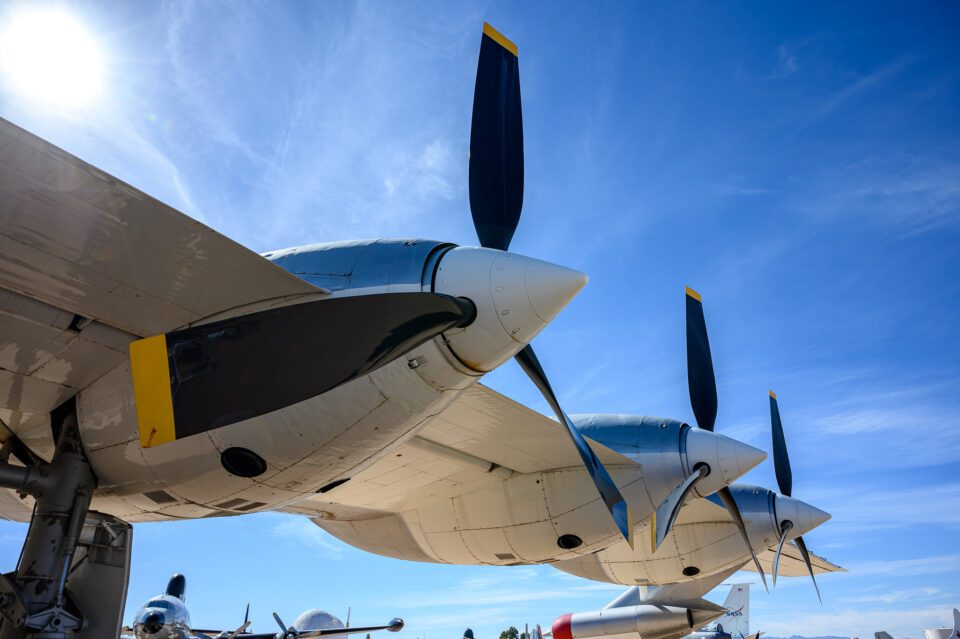
Third-Party Batteries
Nikon is severely cracking down on third-party battery compatibility with the Z6 II. It’s hard to say how many third-party companies are affected, but we tested third-party batteries from four different companies, and none of them worked on the Z6 II (whereas three of the four work fine on the original Z6).
That’s not to say every third-party battery will fail on the Z6 II, but if yours doesn’t, it may be a bit of an exception to the rule. Even if you find a third-party battery that works with the Z6 II, there’s no guarantee it will work with future Nikon cameras or future firmware updates.
We have also heard reports that a few photographers’ prior generation EN-EL15b batteries and earlier are showing the same incompatibility message as third-party batteries. From the reports we have heard, these do not appear to be counterfeits, but instead regular EN-EL15 batteries with a rare chip malfunction or other issue preventing the Z6 II from recognizing them.
Replacement batteries for the Z6 II aren’t cheap. Official Nikon EN-EL15 batteries sell for anything from about $40 for the first generation to $75 for the newest EN-EL15c.
Our Takes
Nasim: We all knew Nikon could kill third-party batteries some day, but what a shame.
Spencer: How many do you have? I just checked, and I’ve got five original Nikon batteries and five from third parties. But most of my original Nikons are several years old by now.
Nasim: I mostly have Nikon batteries but a few third parties. Looks like you need to do exactly what Nikon wants and go battery shopping!
Spencer: Nikon can lead a horse to water, but they can’t make it drink. I’m going to be buying used.

What’s Missing?
This page wouldn’t be complete without a brief look at the features that are still missing on the Z6 II. Nikon has done an admirable job listening to feedback and fixing some of the biggest problems with the prior generation Z-series cameras, but there are still things that can be improved. To borrow from our Nikon Z wishlist:
- There’s still no way to assign drive mode to a custom button, or save it in the U1/U2/U3 user modes. Although it has a dedicated button already, it’s in an awkward spot at the very bottom of the camera’s rear controls. Given how important drive mode is, it should be possible to save it somewhere easier to reach, like the movie record button, and to remember its setting in U1/U2/U3.
- There should be a few more customizable buttons on the Z6 II, or at least dedicated buttons for metering and AF area modes, as on past Nikon cameras.
- Some cameras have an option to automatically magnify the focus point when manually focusing. It’s not an option found on any Z-system camera yet, but it would be a useful addition considering how good the Z6 II otherwise is for manual focus photography (thanks to features like focus peaking and a high-quality EVF).
- The self-timer on the Z6 II still turns off when the camera is switched off and back on. Although this makes some sense if it’s been weeks since using the camera, it can be annoying for everyday use in the field, especially when changing camera batteries and seeing the self-timer turn off.
- Some of Nikon’s competitors allow AF point selection with the touchscreen when looking through the EVF. None of the Z-series cameras can do this yet, and even though it’s not a must-have, it would be a nice handling feature.
- Nikon got rid of the two-button format on all its Z-series cameras so far, which isn’t the end of the world, but it would be nice to see it back again.
There are also some issues with autofocus that we cover later in this review, but these are some of the biggest missing features from a handling standpoint. It’s not a massive list, and most of these should be within Nikon’s capacity to add in the future, even as firmware updates. Here’s hoping that other photographers are telling Nikon about these same issues and that Nikon continues to listen to feedback for the next iteration of the Z system and/or the next firmware version for the Z6 II.
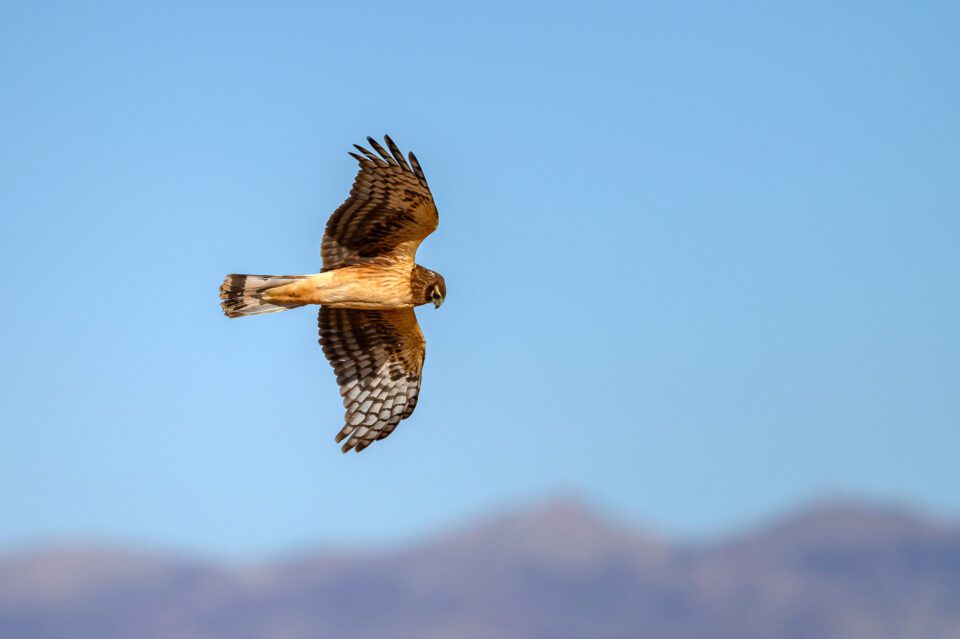
Handling Summary
The Nikon Z6 II is built on the template created by the Z6, and the two cameras are almost indistinguishable side by side. However, the Z6 II does add a number of new features under the hood that we found helpful for our photography. The two biggest changes are the addition of the second memory card slot and the new clutter-free live view display option. The other changes also add up, including the improved timelapse settings, extended shutter speeds, better video features, longer battery life, and EVF sensitivity fix.
Nikon still needs to address some remaining issues with the Z6 II, but overall, it’s a clear step in the right direction. The camera handles very well, and the feature set contains thoughtful improvements compared to the Z6 for almost any genre of photography. Nikon has also been proactive about firmware updates for the Z system so far, so we’re hopeful that other features and fixes will be added within the coming years.
On the next page of this review, we’ll cover the Z6 II’s performance for landscape photography, including its dynamic range, resolution, and autofocus speed/accuracy on static subjects. Click the menu below to go to “Nikon Z6 II for Landscape Photography.”
[ad_2]
Source link


